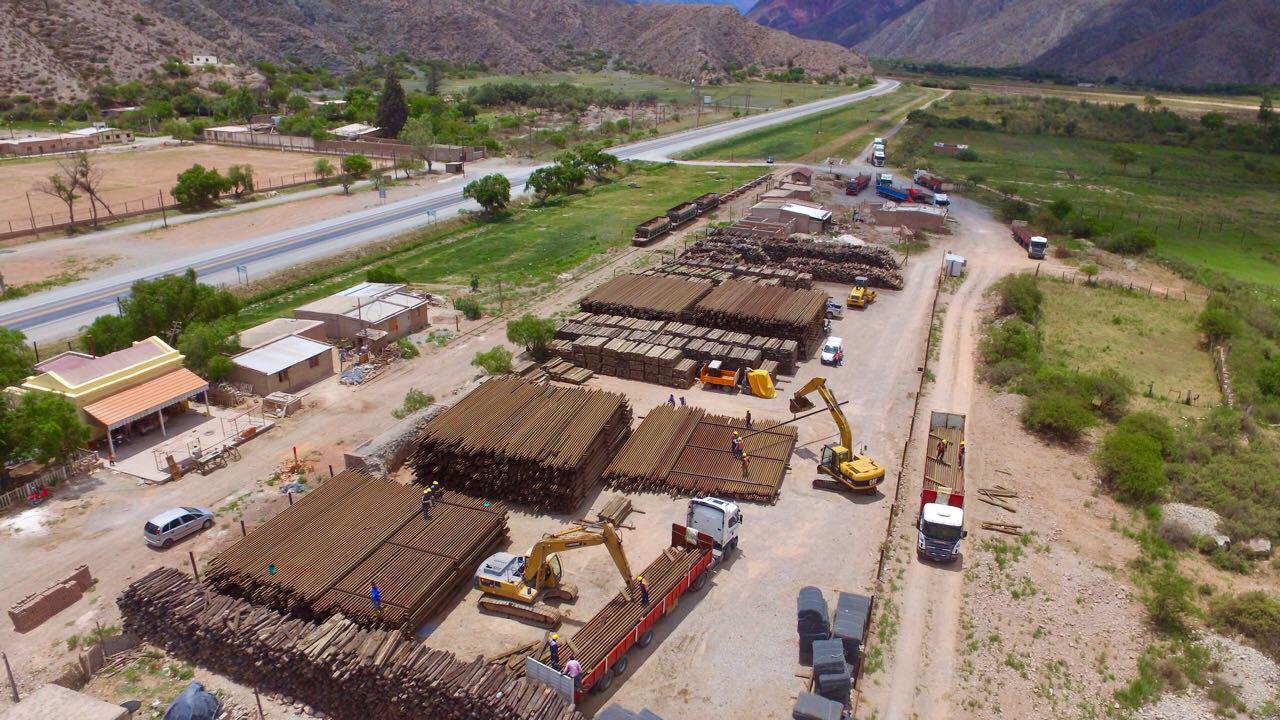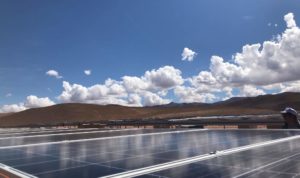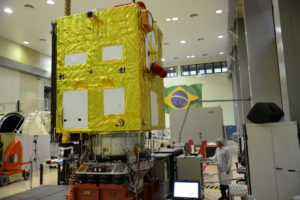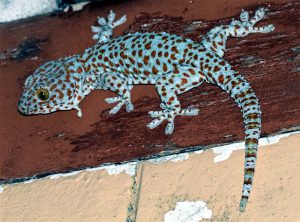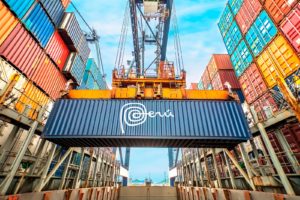Northern Argentine province Jujuy’s unique rock formations that give rise to multi-coloured mountains will provide the backdrop for Latin America’s first solar-powered train.
The 300-kilometre project, which will extend from provincial capital San Salvador de Jujuy to La Quiaca on the border with Bolivia, aims to promote tourism and further deploy renewable energy in the area responsible for Cauchari, Latin America’s largest solar plant. China, India and Australia already have solar trains.
National and international companies are expected to participate in tenders for the project’s three stages, among them Chinese, Diálogo Chino understands. Latin America Development Bank (CAF) will loan Jujuy US$75 million in the coming weeks to cover the first phase.
“We believe that in October we’ll be able to assign the work and start the project,” said Pablo Rodríguez Messina, director of the Jujuy-La Quiaca Train’s executive body.
A reactivated train
The last passenger and cargo train that connected Jujuy with the rest of Argentina and the so-called “Corredor de los Libertadores” that links western Bolivia and Peru, departed from La Quiaca in 1993.
Since then, towns in the train’s vicinity lost access to markets as almost all infrastructure was abandoned.

The current project will seek to reactivate the old route for cargo and passengers. The shorter, tourist train will become operational first, generating additional revenue for the construction of new roads, Messina said.
The first 80-kilometre construction phase will link the towns of Volcán and Humahuaca. A second 157-kilometre track will connect Humahuaca and La Quiaca and the final branch to be built will extend south from the first stop at Volcán to San Salvador de Jujuy. The last phase is highly complex due to the topography of the soil.
Renewable energy
Though fitted with solar panels on its roof, the train will also be powered by batteries charged at stations 10 kilometres apart.
“We want a design on the train that has contact with the landscape and that is why it will have large windows,” Messina said.
A new 6MW solar park consisting of around 20,000 solar panels will charge the train’s batteries, according to Martín Altamirano, a technician at Cauchari who is also involved in the train project.
Now the train is being thought about purely for tourism. People are hopeful, but at the same time they see that there is no progress
CAF’s loan will finance construction of the new park, employing around 150 workers. China’s Telesun supplies Cauchari’s 1.2 million panels and Chinese companies are expected to bid to provide technology for the train.
“We have already carried out the initial studies for the solar park, including the environmental pre-feasibility. There have been important advances,” said Mario Pizarro, Jujuy’s energy secretary.
Each station will be themed to represent local towns’ culture, with local architects competing for their design.
For example, Tumbaya will focus on religiosity, gastronomy and indigenous communities, while Purmamarca, known globally as the Hill of Seven Colours, will pay homage to the landscape and local salt works.
“The railway is not only a means of communication but something that articulates the natural and cultural landscape that stimulates local development,” said Tito Tarcaya of the Jujuy Architects Association.
Expectations
While the train could bring a positive impact on jobs and income, delays to the project have left many local inhabitants sceptical about it materialising.
Governor Gerardo Morales announced breaking ground in March 2017 with tracks provided by the national government. In February 2018, Morales held another event to signal the laying of new road. Some 28 months after the first announcement, just seven kilometres of track have been laid.
Marcos Velázquez, Volcán’s commissioner (the town’s highest authority), said the reactivation of the train is vital to improving his town’s economic situation.
"Volcán was born from a railway town. Villagers themselves prepared food, left with their vegetables on the train and sold their harvest," he said.
Esperilón Mamaní makes fabrics in the Volcán railway building. "The return of the train represents better livelihood for the people, as it was before. More tourism can come," he said with a smile.
Claudio Rojas works at a butcher in Volcán, in front of the former station. His father used to sell to train passengers. "People bought sandwiches, vegetables and fruit. Small producers in the area used to offer their goods when the train stopped," he said.
Aldo Chañi lives in Tumbaya and is a state employee. He said that despite some feeling jaded about slow progress, the train should happen because its benefits. "If they finish it, it might be convenient for tourism," he said.
However, Karina Paniagua, the recently elected mayor of Humahuaca, said local communities should be those that benefit.
"Now the train is being thought about purely for tourism. People are hopeful, but at the same time they see that there is no progress," she said.
Next steps
Jujuy’s government has promised to move forward with the project once the provincial legislature has approved taking on credit from CAF.
230,000
people are expected to use the solar train each year
"We believe the train will have approximately 230,000 users each year. We hope that in addition to the passengers, another 50,000 people will benefit from economic activities that will develop thanks to the train," Messina said.
Jujuy expects to hire 300 employees directly for the development of the train. It could generate another 300 jobs indirectly.
Ticket sales alone would generate around US$2,260,000 annually, according to initial calculations by the Jujuy government. With the train requiring between 2 and 3MW, the new solar park could sell its surplus energy for US$500,000 each year.
